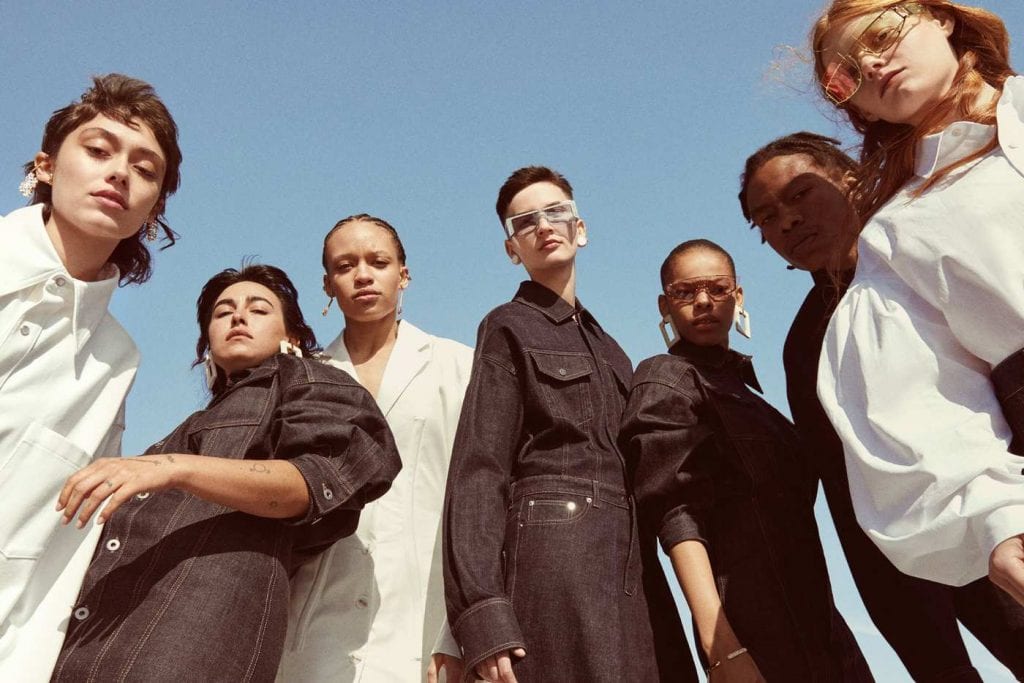“Is the era of the designer who achieves fame purely on the merits of his/her creative vision and designs over? Are trained designers destined to be the anonymous worker bees behind megabrands fronted by glamorous celebrities?,” asks Women’s Wear Daily’s Bridget Foley in a new article reflecting on what the launch of Rihanna’s Fenty collection with LVMH Moët Hennessy Louis Vuitton says about the status quo and the future of fashion.
“What are the long-term creative ramifications for fashion?,” Foley continues. “Will young creative types continue to view traditional fashion design as an attractive career path? Has the zeal for brand-building made the zeal for creative expression a secondary consideration?”
No one has all of these answers, particularly now, given that “the industry has changed, the consumer has changed, the culture has changed,” and they continue to evolve further and with some rapidity. Nonetheless, Foley – and a handful of industry insiders – provide some striking points to ponder.
For one thing, Foley points to the fact that the influence of celebrity and the movement of Hollywood starlets and other fames figures into the territory formerly reserved for more traditional design types is nothing new. And in fact, the frequency of which brands are currently opting to put all of their eggs in the basket of a lesser-known designers is dropping, save for a handful of examples, such as Alessandro Michele, who was a behinds-the-scenes designer before he was appointed to the top spot at Gucci or even more recently, fellow Kering-owned brand Bottega Veneta’s new creative director, Daniel Lee, who does not even maintain a public-facing social media presence – something of a marked outlier these days.
Even then, “Is the Rihanna-LVMH partnership particularly symbolic?,” Foley asks, and then notes that LVMH chairman Bernard Arnault, who has pioneered the partnership with Rihanna, “is a brilliant man, with a fabulous track record for identifying talent and directing LVMH, both in response to and anticipation of cultural shifts.” Noting the “rarity with which he goes all-in on an untested designer, one might infer that he sees celebrity crossover as the way of the future, and even that creativity is a secondary consideration.”
That is concerning to some. “As a dean and as an educator for 20 years,” Troy Richards, dean for the school of art and design at the Fashion Institute of Technology, says, “I worry about the encroachment of celebrity culture, a kind of dominance of branding.”
Robert Burke, founder of the Robert Burke Associates consultancy, speaking to the larger shift in fashion over the years, states, “It used to be that it was all about the product and it was all about the craft and all about the workmanship and the training and the background and devoting your singular focus to just that.” Today, he asserts, “It’s not.” Instead, he says that “ultimately the product is key, but the product alone today is not enough to carry it.”
Foley agrees, “These days in fashion, innovation and wonderment aren’t the singular driving forces they once were,” which in a wholly-digitalized world, dominated by break-neck speed, endless options, and dwindling attention spans, makes sense.
That is where big names come in, whether it be Rihanna or Virgil Abloh or even Hedi Slimane, who comes with his own built-in network of cult fans (i.e., shoppers). “To reach out to the masses and to have the scale, fashion needs that level of visibility and recognition by the public,” said Burak Cakmak, dean of fashion at Parsons School of Design.
As for whether this is the only profitable (and truly competitive) way forward, that certainly is not clear. Drumming up massive amounts of press – both by way of big name creatives and heavy marketing budgets – is what is needed in order to sell one’s own weight in “it” bags, sneakers, and licensed fragrances and eyewear, which is the modus operandi in the corporatized realm that LVMH and Kering occupy, and has been for years.
While that does not mean that countless others are not operating in a different way – one that focuses a but more on product (pre-acquisition Dries Van Noten and Rick Owens come to mind), the bottom line associated with that approach tends to come with far less zeros attached to it. While privately-owned brands may be able to swing that, the likes of LVMH cannot afford to shirk revenues with shareholders looking on.











